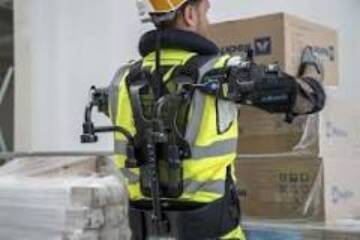VIL tests concept 'Physical Internet' in ports of Antwerp and Zeebrugge

Innovation platform for logistics VIL is working with imec and VUB Mobi on a pilot project to test the Physical Internet (PI) concept for transport in the ports of Antwerp and Zeebrugge.
Innovation platform for logistics VIL is working with imec and VUB Mobi on a pilot project to test the Physical Internet (PI) concept for transport in the ports of Antwerp and Zeebrugge.
According to this principle, logistic processes and networks are bundled, allowing goods to be transported in an optimal way.
The Physical Internet is an idea to organize transport according to the principles of the digital Internet: instead of a fragmented landscape in which each transport company goes its separate way, a bundled network is created to transport all goods as quickly and efficiently as possible. "In the same way that an email uses the full network capacity to go from sender to receiver, goods should use the full capacity of the infrastructure," says Tomas Ambra, Research Director for Logistics at imec EDiT.
The end result is an integrated solution where all modes of transport can be deployed in combination. "The PI opens the door to numerous new logistics business models in which an umbrella IT system shows logistics service providers opportunities in terms of collaboration, and the more efficient use of available personnel, assets and transport capacity. As a result, it will make a significant contribution to reducing logistics costs, making the logistics sector more sustainable and increasing service levels", says Liesbeth Geysels, General Director of VIL.
Within the PILL (Physical Internet Living Lab) project, VIL, imec and VUB Mobi are now going to work with more than twenty partners from the logistics sector on PI in the ports. In Antwerp and Zeebrugge an IT prototype will be tested to unify the processes of the many companies in and around the ports.
Initially, PILL will be limited to the port ecosystems. From 2023 onwards, the initiators want to roll out the concept further in Flanders, Europe and eventually the whole world.
Latest insights & stories

Wat is 5G-slicing en wat betekent het voor uw business?
De troeven van het 5G-netwerk op het vlak van snelheid, bandbreedte en lagere latentie zijn intussen bekend. Een ander, even essentieel kenmerk blijft evenwel vaak onderbelicht: network slicing. Tania Defraine, Director Enterprise Solutions & Platforms bij Proximus NXT, legt uit hoe het opdelen van het mobiele netwerk in aparte schijven resulteert in een maximale bedrijfszekerheid, flexibiliteit en kostenefficiëntie.

Internet of Facades (IoF) is koploper in het tijdperk van slim en duurzaam wonen: Living Tomorrow showcased IoF
Terwijl de wereld zich snel beweegt naar een meer verbonden en intelligente toekomst, evolueren de gebouwen waarin we leven en werken fundamenteel. Een van de meer ingrijpende evoluties in het architecturale landschap is de transmutatie van traditionele gevels naar dynamische, responsieve entiteiten, via het concept van het Internet der Gevels (IoF). Deze integratieve aanpak wijst op een revolutie in het beheer en onderhoud van gebouwen, leidend tot een tijdperk van duurzaam en slim wonen.

Harnessing the Power of Exoskeletons
In the dynamic landscape of smart buildings and infrastructure, technological advancements continue to redefine the way we design, construct, and operate our built environments. Among the most groundbreaking innovations are exoskeletons — wearable robotic devices that augment human capabilities and enhance productivity.